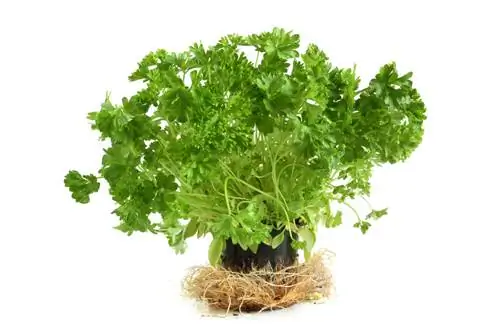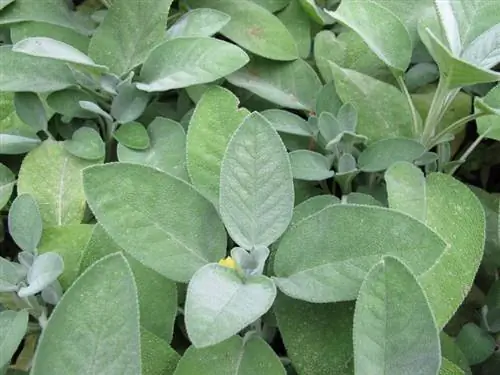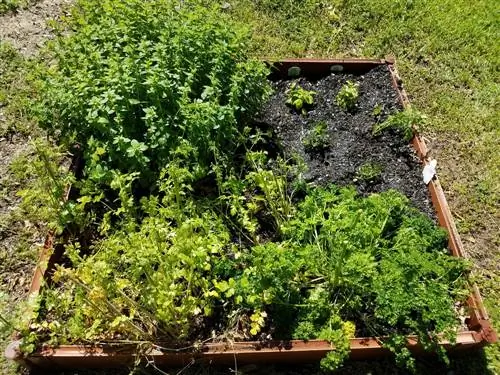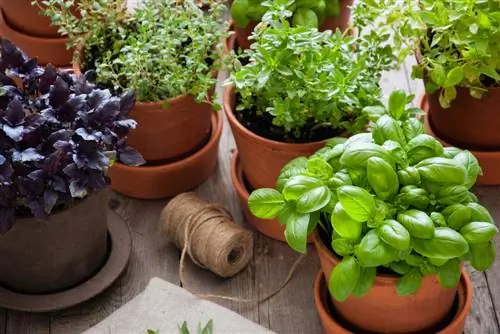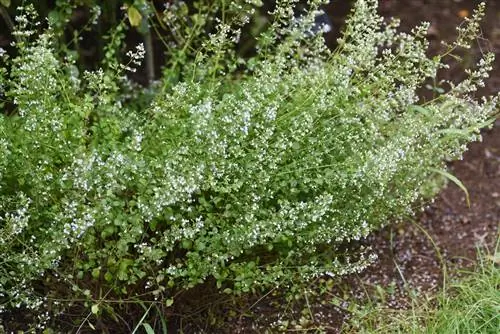- Author admin [email protected].
- Public 2023-12-16 16:46.
- Last modified 2025-01-23 11:20.
It has been used by people for thousands of years as a refreshing culinary plant and an effective medicinal herb. The profile of mint reveals the diversity of this herbal plant steeped in history, which is now more popular than ever.

What are the characteristics and ingredients of mint?
Mint belongs to the mint family (Lamiaceae) and the genus Mentha. It is a perennial, herbaceous plant native to the temperate climate of the northern hemisphere and grows to a height of 20-100 cm. Ingredients such as essential oils, monoterpenes and flavonoids have a wide range of applications.
Characteristic features at a glance
First a mint completes the planting plan of a herb garden. Above all, peppermint and Moroccan mint are the best-known species, and the genus offers a wide range of variations. Regardless, from a botanical perspective, mints have similar characteristics, as the following profile shows:
- Plant family of the mint family (Lamiaceae)
- Mint genus (Mentha)
- Native to the temperate climate of the northern hemisphere
- Herbaceous perennial plant
- Growth heights from 20 to 100 centimeters
- Predominantly upright, rarely prostrate growth
- Flowering period from June to September
- Subterranean runners and rhizomes with invasive character
- Brown locust fruits with seeds in autumn
- Hardy down to -24 degrees Celsius
Typical of all mints is the ability to pull in the above-ground parts of the plant in autumn. The roots from which the herb plant sprouts overwinter the following year. At the favorable location there is a life expectancy of up to 25 years.
Ingredients and Use
Since mint is extremely susceptible to cross-breeding, the exact identification and differentiation of species is difficult. Botanists assume there are around 30 species, resulting in an unmanageable variety of varieties. Today, modern varieties such as strawberry mint, pineapple mint, chocolate mint and banana mint compete head-to-head with the classics peppermint and spearmint. These ingredients lay the foundation for a wide range of uses:
- essential oils, such as menthol, 50 to 80 percent
- mood-enhancing monoterpenes at 5 percent
- antibacterial flavonoids at 10 percent
Thanks to these and other ingredients, mints are used as tea, as an ingredient in sweet dishes, and as a seasoning in delicate meat and fish dishes. The essential oils help relieve colds and other he alth problems. In addition, its scent repels annoying mosquitoes, flies and ants.
Tips & Tricks
Hobby gardeners should not underestimate the invasive nature of mint. From the day of planting, the roots embark on a campaign of conquest through the garden. Young plants should therefore be used with a rhizome barrier (€78.00 on Amazon). For example, a large pot without a bottom or a sturdy geotextile is suitable.


